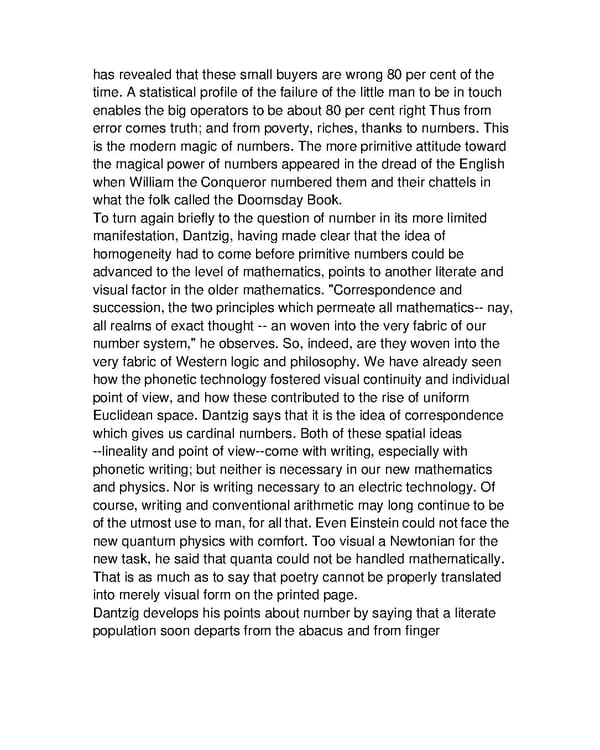has revealed that these small buyers are wrong 80 per cent of the time. A statistical profile of the failure of the little man to be in touch enables the big operators to be about 80 per cent right Thus from error comes truth; and from poverty, riches, thanks to numbers. This is the modern magic of numbers. The more primitive attitude toward the magical power of numbers appeared in the dread of the English when William the Conqueror numbered them and their chattels in what the folk called the Doomsday Book. To turn again briefly to the question of number in its more limited manifestation, Dantzig, having made clear that the idea of homogeneity had to come before primitive numbers could be advanced to the level of mathematics, points to another literate and visual factor in the older mathematics. "Correspondence and succession, the two principles which permeate all mathematics-- nay, all realms of exact thought -- an woven into the very fabric of our number system," he observes. So, indeed, are they woven into the very fabric of Western logic and philosophy. We have already seen how the phonetic technology fostered visual continuity and individual point of view, and how these contributed to the rise of uniform Euclidean space. Dantzig says that it is the idea of correspondence which gives us cardinal numbers. Both of these spatial ideas --lineality and point of view--come with writing, especially with phonetic writing; but neither is necessary in our new mathematics and physics. Nor is writing necessary to an electric technology. Of course, writing and conventional arithmetic may long continue to be of the utmost use to man, for all that. Even Einstein could not face the new quantum physics with comfort. Too visual a Newtonian for the new task, he said that quanta could not be handled mathematically. That is as much as to say that poetry cannot be properly translated into merely visual form on the printed page. Dantzig develops his points about number by saying that a literate population soon departs from the abacus and from finger
 Understanding Media by Marshall McLuhan Page 127 Page 129
Understanding Media by Marshall McLuhan Page 127 Page 129